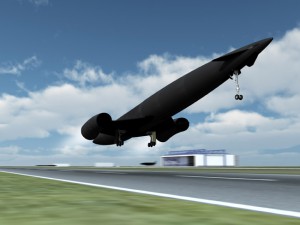8th May 2014 Bangalore, India
On a Space Journey – Part 2
I’ve already told you about the Rutherford Appleton Lab, part two of my UK space odyssey was the Strathclyde Space Institute (SSI), University of Strathclyde in Glasgow.
As I walked through the institute I saw a photograph of a strange looking air vehicle called the Skylon Spaceplane. This spaceplane, which is still in experimental stage, could change the future of space travel by lowering the costs considerably. It is being designed to fly at more than 5 times the speed of light from a runway like an aircraft to the space orbit in a single stage. It is completely reuseable and does away the need for a pilot.
The key to the project is the Sabre engine being designed by a British Company called Reaction Engines Limited, which can operate as both a jet and rocket motor with a specially designed cooling system. At SSI, the Centre for Future Air and Space Transportation Technology (cFASTT) is providing its strong research support to the Spaceplane programme. cFASTT is also working on research problems related to vehicles for planetary exploration and high speed long range airliners.
SSI has three other centres apart from cFASTT to address key challenges in fundamental space physics, space systems engineering, satellite applications and access to space. These centres are;
- Advanced Space Concepts Laboratory: The Advanced Space Concepts Laboratory undertakes frontier research areas such as Astrodynamics, Guidance, Space Navigation and Control, Mission Systems and Optimisation.
- Space Mechatronics Systems Technology Laboratory: Research areas performed by this group include space robotics for in-orbit satellite services and refuelling, space system – human interaction and integration technology and mechatronic solutions for advancing manufacturing techniques for large, one-off and complex space systems.
- Centre for Space Science and Applications: This centre works on a broad range of space physics problems, such as gravitational wave detection from space, and the exploitation of remote sensing satellite data for environmental observation of the oceans.
SSI is not only about space science and technologies. Some of the learnings are being applied in designing efficient and environment friendly windmills as well. The institute is also actively helping inspire young minds in the UK about space science and careers in space science and technology through the Scottish Space School.
A new Scottish Centre of Excellence in Satellite Applications is coming up at the University’s new £89 million Technology and Innovation Centre. It is one of three centres of excellence set up by the Satellite Applications Catapult – with the other two in Durham and Leicester. The centre aims to establish greater links between the space scientists in SSI and the business community so as to encourage companies to use satellite data in innovative ways and develop new satellite based services and products.
SSI is keen to increase international links including with Indian institutes and organisations in terms of joint research projects and student exchange programmes leading to joint doctoral degrees. If you are interested, let me know.